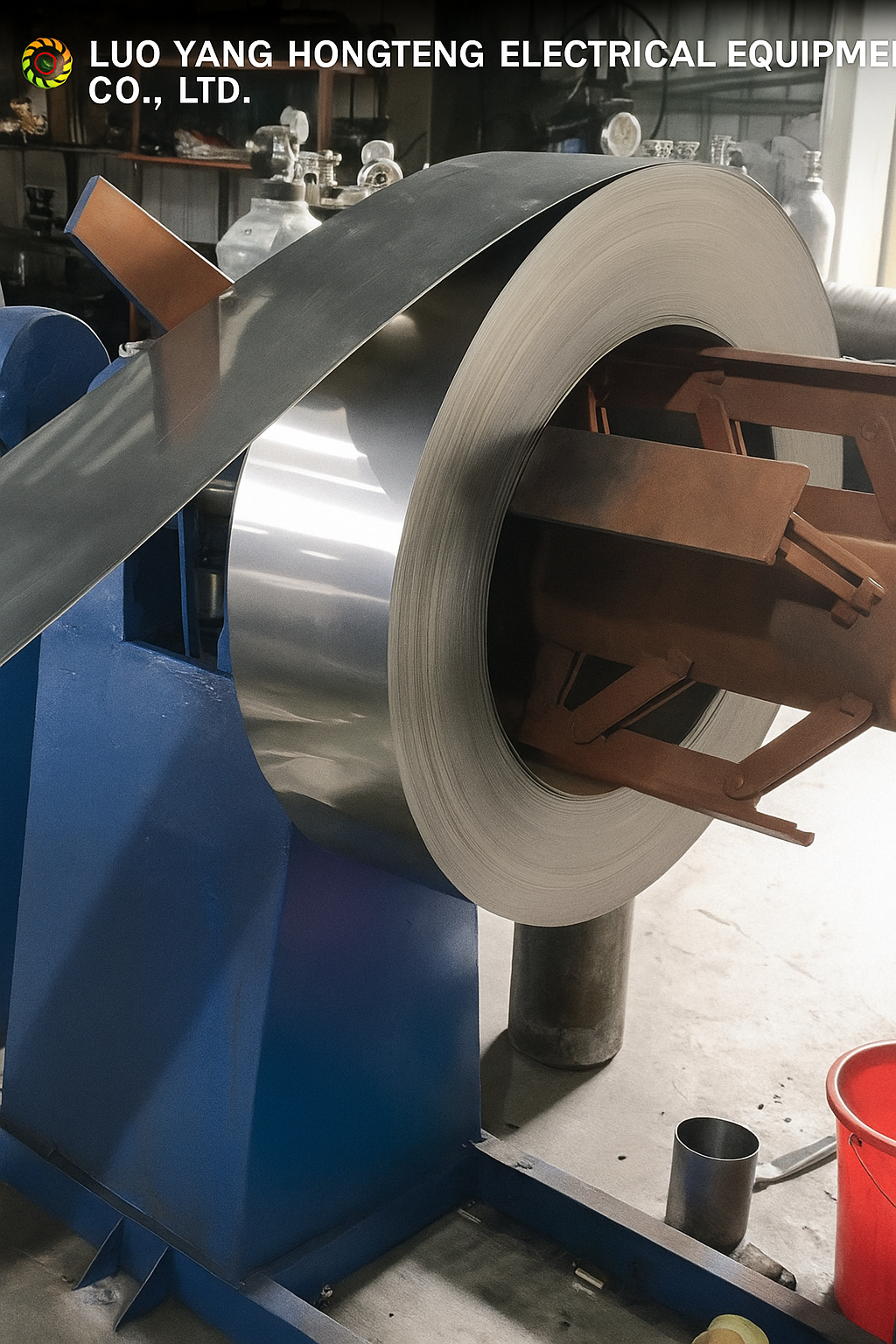Steel Strip Processing Equipment
Steel Strip Processing Equipment
To achieve consistent results in pipe production, the performance and precision of the raw materials—specifically the steel strip—are absolutely critical. The quality of the purchased material must meet strict standards, and its dimensions should remain as uniform as possible.

Even a width deviation of just 0.25% can cause complete weld failure when the thickness tolerance reaches half of the allowable range. Under ideal welding conditions, when both edges of the steel strip are pressed together with just the minimum required pressure to form a uniform weld across the entire cross-section, the importance of material consistency becomes clear.
1. The Importance of Precision in Steel Strip Dimensions
With modern cutting technology, achieving the required dimensional accuracy is fully possible. However, the direction of the sheared edge plays a key role in determining weld quality and roller wear:
-
If the sheared edge curls upward, roller wear decreases significantly—but it can result in a larger internal weld seam, which is undesirable for the final product.
-
If the sheared edge curls downward, the internal weld seam becomes smaller, creating slightly better welding conditions. Yet, this may increase roller wear and slightly reduce the cross-section of the weld zone.
Both factors must be carefully considered when selecting the appearance and cutting form of the steel strip.
2. Common Causes of Welding Quality Fluctuations
If, during production, welding quality decreases or difficulties arise in achieving satisfactory joints, the first areas to check are:
-
The width deviations of the steel strip
-
The condition of the sheared edges
These small variations often directly influence the consistency of the weld.
3. Factors Affecting Width and Thickness in Tube Rolling
During tube rolling, several factors can cause changes in strip width and thickness. For instance:
-
Clamping rollers may bend the strip, leading to thickness variations across its width.
-
Incorrect roller alignment in forming and sizing sections can exert uneven pressure, resulting in cold rolling deformation, which alters both width and thickness.
-
Differences in roller speed or diameter changes after regrinding can also lead to dimensional inconsistencies.
4. Achieving Superior Tube Quality Through Consistency
Ultimately, high-quality, uniform steel strips significantly contribute to producing top-grade welded tubes. Maintaining precise control over material thickness, edge condition, and width ensures strong, even welds and minimizes defects during continuous production.
Key Takeaways for Steel Tube Manufacturers
-
Use high-standard raw materials with minimal dimensional deviation.
-
Continuously monitor strip width, thickness, and edge quality.
-
Regularly inspect roller alignment and speed synchronization.
-
Apply modern shear and forming technologies to maintain consistent precision.
A commitment to accuracy and material consistency not only improves welding performance but also enhances the overall durability and market competitiveness of your steel pipe production line.

